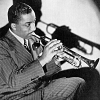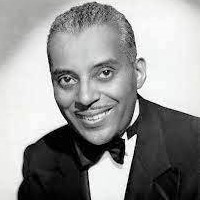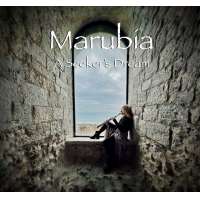Noble Sissle was one of African-American music's unsung tradition-builders. As half of the duo that composed “Shuffle Along,” he helped to bring creativity to a new level on the Broadway stage. As a bandleader, Sissle nurtured the careers of vocalist Lena Horne and other important musicians, and he participated fundamentally in the popularization of jazz and pop in Europe. Sissle was born in Indianapolis, Indiana, on July 10, 1889. His father was a minister and church organist, and his first musical appearances came as a boy soprano in a Methodist church choir. Sissle studied music in the public schools of Indianapolis and Cleveland, Ohio, where his family moved for a time. While still in his teens, Sissle was touring the Midwest as part of vaudeville and gospel quartets. He enrolled at Indiana's Butler University in 1913 and later transferred to DePauw, but music held a stronger grip on his attentions. With interest in dancing being spurred by the rise of black-influenced popular music such as ragtime, Sissle was tapped to organize a dance orchestra at the Severin Hotel in Indianapolis. Moving to Baltimore in 1915, Sissle landed a job singing with a vocal group called Joe Porter's Serenaders. Performing in a Baltimore park one evening, he met James Hubert "Eubie" Blake, a ragtime pianist who was a star of the city's music scene and was known up and down the East Coast. The two men hit it off creatively; Sissle had written lyrics for a song called "It's All Your Fault," and soon Blake had set it to music. The pair found immediate success when Sophie Tucker, one of the leading white female vocal stars of the day, introduced the song at a Baltimore performance. Sissle briefly led a band in Coconut Grove, Florida; with this experience under his belt he was hired into the dance orchestra of New York bandleader James Reese Europe, whom he had known since his Indianapolis days. The so- called "society bands" of which Europe's was the best known were not jazz bands but were important predecessors of jazz, furnishing syncopated dance music for the fox trots and other new dances of African-American origin that had seized the fancy of American young people. Sissle became a vocalist and guitarist with Europe's group The entrance of the U.S. into World War I in 1917 saw both Europe and Sissle joining the Army and successfully combining military service with their musical activities.
Read more
Europe formed the 369th Infantry Regimental Band, a group of musical, black servicemen who entertained European audiences with the latest American dance styles; Sissle performed on drums with the group. The 369th Infantry Regimental Band was a smash success, and Sissle thus became one of the first African-American musicians to find and enjoy the appreciation of audiences across the Atlantic. He joined the group on tour in France after the war ended, but the tour ended with Europe's murder by one of his band members in 1919. Back in the U.S., Sissle reunited with Blake and the pair formed a vaudeville act called the Dixie Duo. This act differed from other African-American stage presentations of the day in two important respects. First, Sissle and Blake worked, not in theaters that catered primarily to blacks, but, rather, in the circuit under the control of the Keith firm, one of the country's leading theatrical promoters. Sissle and Blake were able to partly break down the segregated seating arrangements that prevailed in many theaters. Most important, though they did not entirely eliminate the stereotypes of blacks that pervaded productions of the day, they did not wear the burnt-cork blackface makeup that was conventional for both white and black minstrel performers. Sissle and Blake are thus credited with a major step in the creation of a more dignified image for African-American entertainers. In 1921 Sissle and Blake joined with several other veteran black performers to mount a full-scale musical of their own, Shuffle Along. Again, Sissle was the lyricist, Blake the composer. Shuffle Along was one of the first all-black productions to appear on Broadway, and it, too, broke down barriers. Sissle's book for the show included romantic love scenes between black characters, and at the opening performance the company feared ridicule and anger from its white audience. But Shuffle Along became a smash, running for more than 500 performances and grossing the impressive total of eight million dollars. The show's plot involved a satirical treatment of the political leaders of a fictional all-black town. It included an upbeat song called "I'm Just Wild About Harry" that became not only a pop standard but also an insurance policy for Sissle's old age when it was revived as part of the 1948 campaign of President Harry Truman and entered upon a fresh round of royalty-producing performances. Shuffle Along inaugurated the careers of future stars Josephine Baker and Paul Robeson, who were part of the company. Sissle and Blake, riding high, joined forces again on The Chocolate Dandies (1924) and other shows, and went on tour in Europe as "the American Ambassadors of Syncopation." Although they continued to work together occasionally for the rest of their lives, Sissle and Blake parted ways in 1926; one of the issues was that Blake wanted to return to the U.S., while Sissle hoped to pursue opportunities in France's expanding jazz scene. Encouraged by songwriter Cole Porter, Sissle put together a band of top jazz expatriates that included clarinetist Sidney Bechet. Touring with this group and also as a singer, Sissle remained in Europe for several years, sometimes returning to the U.S. for brief engagements. Sissle's band gained renown in Europe; he is underappreciated as a contributor to the Americanization of European musical tastes. At one British date, the future King Edward VIII was said to have played drums with Sissle's group. Sissle re-formed his orchestra in America when he returned home in late 1930, and enjoyed a successful career in the 1930s and 1940s even though he was no longer in the forefront of jazz developments. Sissle and Blake reunited for the Broadway show Shuffle Along of 1933; it was less successful than its predecessor but spawned another significant career--that of Nat "King" Cole, who performed on keyboards. Yet another performer whose career Sissle helped along was that of Lena Horne, who became the featured female vocalist with his orchestra in the mid- 1930s. Sissle returned to Europe to entertain U.S. troops during World War II and led his orchestra well into the 1950s. In later years he lived comfortably, working as a disc jockey and overseeing his copyrights; unlike many other black musicians, Sissle had succeeded in maintaining ownership of many of his works. He died in Tampa, Florida, on December 17, 1975.
Source: James M. Manheim
Show less




























